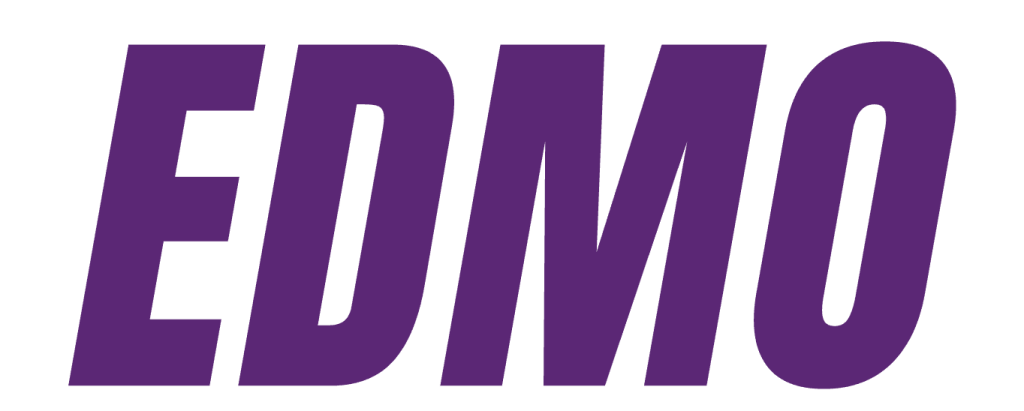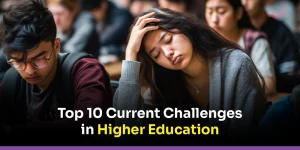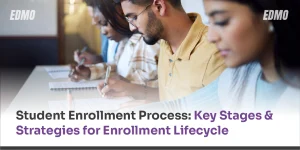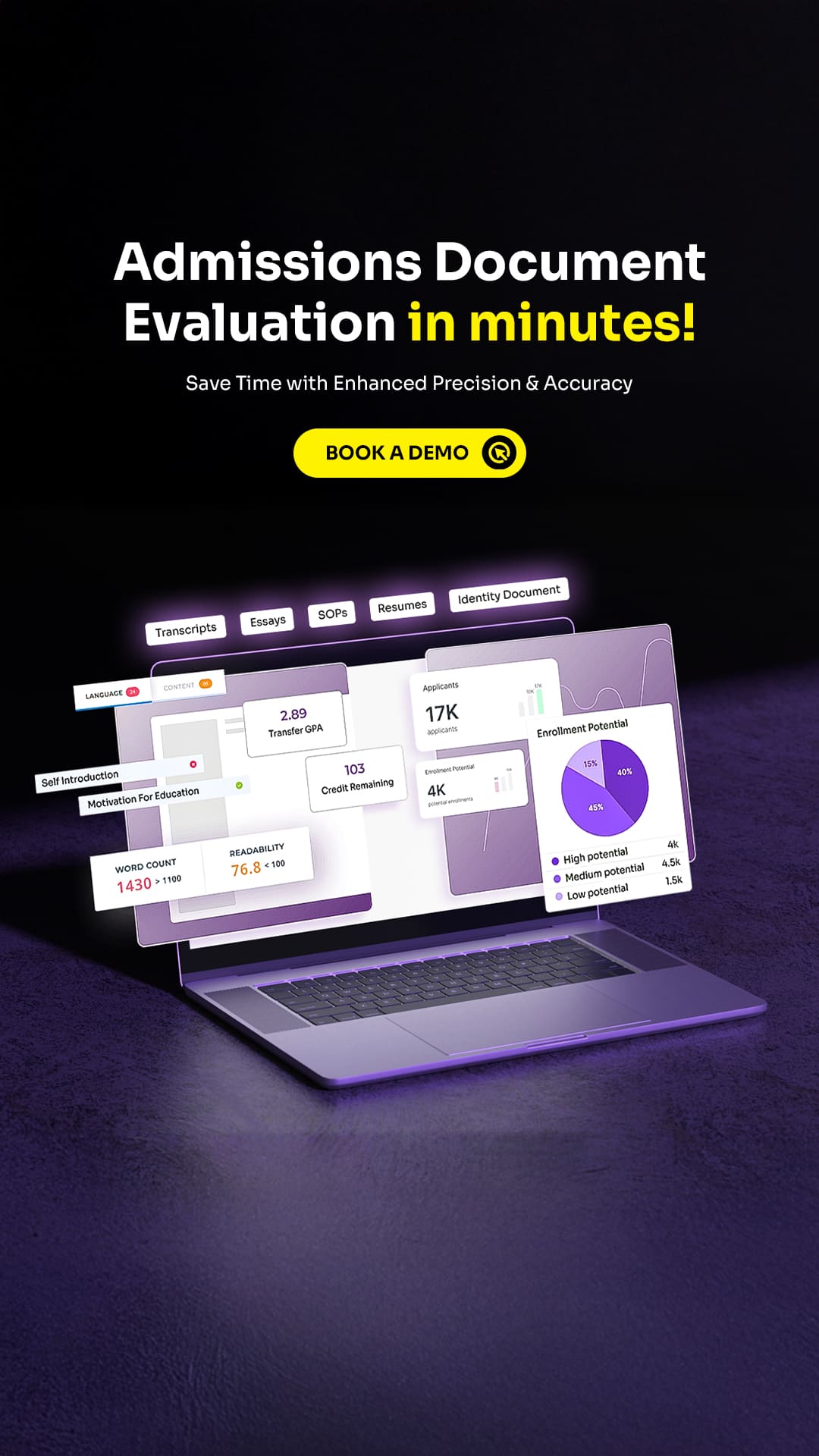Table Of Contents
The H1B visa has been a focal point of debate lately, especially as business and political figures like Elon Musk and Donald Trump express their views on immigration. Shifts in visa policy can significantly impact higher education institutions—not only by affecting student enrollment but also by altering financial landscapes. Here’s what universities need to know about the potential changes.
What is the H1B Visa?
According to the American Immigration Council, The H-1B is a temporary visa that enables employers to hire highly educated foreign professionals for specialty jobs requiring at least a bachelor’s degree or equivalent. These roles are commonly in fields like math, engineering, technology, and medical sciences. The initial H-1B visa duration is three years, with the possibility of extending it to a total of six years.
Since its establishment in 1990, Congress has capped the number of H-1B visas issued annually. The current limit is 65,000 visas, with an additional 20,000 available for foreign professionals holding a master’s or doctorate from a U.S. institution.
Elon Musk’s Perspective on Skilled Immigration
Elon Musk, a vocal advocate for skilled immigration, has emphasized how crucial it is for the U.S. to attract top talent to drive innovation.
Musk, the founder of X, shared on the platform, “The reason I’m in America along with so many critical people who built SpaceX, Tesla and hundreds of other companies that made America strong is because of H1B.”

Musk, who immigrated from South Africa, believes the U.S. benefits when it opens its doors to skilled workers, particularly in tech and science. For universities, international students bring diversity and academic excellence, especially in STEM fields. A reduction in H1B visas could limit access to this talent pool, hindering research, innovation, and the overall academic environment that drives rankings and attracts top-tier faculty.
Musk’s X War with Stephen Miller
Over the holidays, a bitter feud erupted between Elon Musk and Stephen Miller over H-1B visas. Musk, a staunch advocate for the program that enables companies to hire skilled foreign workers, credited H-1Bs for his own success and that of Tesla and SpaceX.
Meanwhile, Stephen Miller, a hardline anti-immigration strategist and key architect of Trump’s restrictive policies, has long pushed to limit legal immigration, including H-1Bs. Trump himself has sent mixed signals as to his plans for immigration, illegal and legal alike.
Donald Trump’s Administration and Its Impact on Immigration
Under former President Donald Trump, the H1B visa process became more stringent, with policies that made it harder for international students to transition into the U.S. workforce.
According to the American Immigration Council, under the Trump administration, H-1B petition denials increased, peaking at 24% in FY (Fiscal Year) 2018. However, denial rates steadily decreased, dropping to 2% by FY 2022, the lowest ever recorded. Denials for continuing employment also fell from 12% in FY 2019 to 2% in FY 2021 and 2022.
If Trump returns to office, there’s a strong likelihood of more restrictive measures, including higher rejection rates for visa applications and limits on work options post-graduation. Universities that rely on international students for enrollment, faculty, and research could see a direct impact on their bottom line. A decline in international students could lead to lost tuition revenue and reduced financial support from international collaborations.
The New Administration: Opportunities and Risks
The incoming administration has a chance to revise policies and create a more welcoming environment for international students. Proposals like extending work permits, simplifying the H1B process, and offering clearer paths to permanent residency could help universities retain top talent. However, immigration remains a contentious issue, and any changes might still be limited. If policies tighten further, universities could face challenges recruiting international students and retaining international faculty, particularly in high-demand fields.
Economic and Financial Impact on Higher Ed Institutions
In an article from a local North Carolina newspaper, a council member shares his concerns over the changes in policy for the students and the economy, “They’re more than just workers, they’re business people that are entrepreneurs and they’re innovators and the question is do we want those innovators going somewhere else?”
International students contribute significantly to the U.S. economy, with estimates showing that they bring in over $45 billion annually. For universities, this means not only tuition revenue but also research funding, faculty diversity, and global partnerships. A decrease in international student enrollment could affect universities’ financial health, forcing them to adapt to a more competitive global education market. Additionally, higher application fees for visas or administrative costs related to immigration support could further strain budgets.
Actions Higher Education Institutions Can Take
As policy shifts loom, universities should take proactive steps to mitigate potential impacts:
- Stay Informed
Keep up with changes in immigration policies through credible sources, and engage with student organizations that advocate for international students. Being informed allows universities to react quickly to policy changes. - Strengthen Industry Partnerships
By collaborating with industries reliant on skilled immigrants, universities can create pathways for international students to secure jobs and H1B sponsorships, ensuring post-graduation success. - Diversify Funding
Relying solely on international student tuition can be risky. Universities should explore partnerships, research grants, and private-sector collaborations to maintain financial stability. - Enhance Support Services
Offering robust career services, visa support, and community-building programs for international students will increase retention and contribute to a positive campus environment, even in the face of changing immigration policies.
Conclusion
The future of the H1B visa program remains uncertain, but higher education institutions must prepare for potential changes that could affect their international student population. By staying informed, building strategic partnerships, and supporting international students, universities can navigate these challenges and continue to thrive in a globalized academic landscape.
Also read: Revolutionize Your Admissions Process with EDMO’s Smart Solutions
K-12 Student Success Strategies and Tools
Reinventing global recruitment through a process-oriented approach
Strategies to increase student enrollment with a limited admission team








No comments yet. Be the first to comment!
Leave a Comment